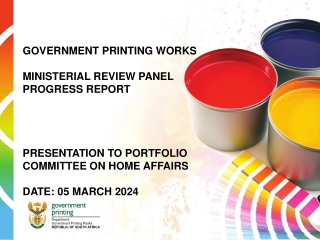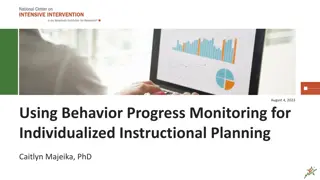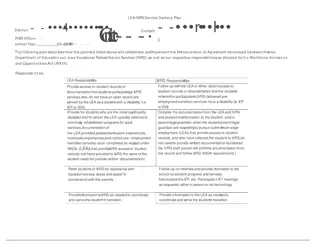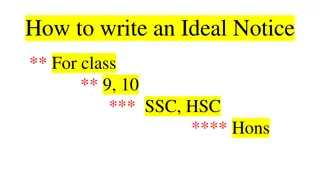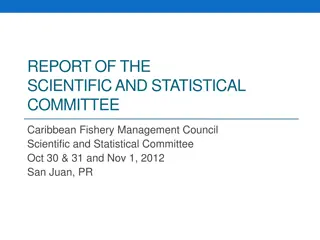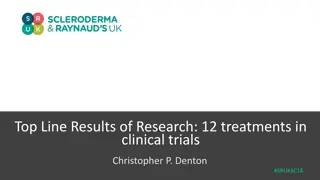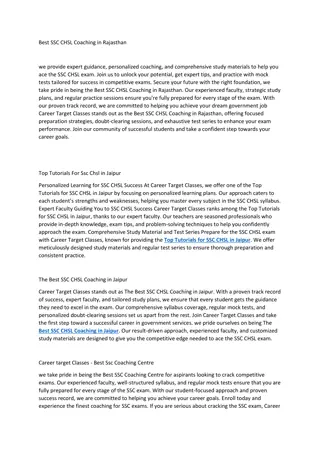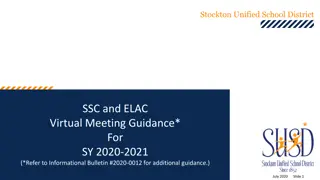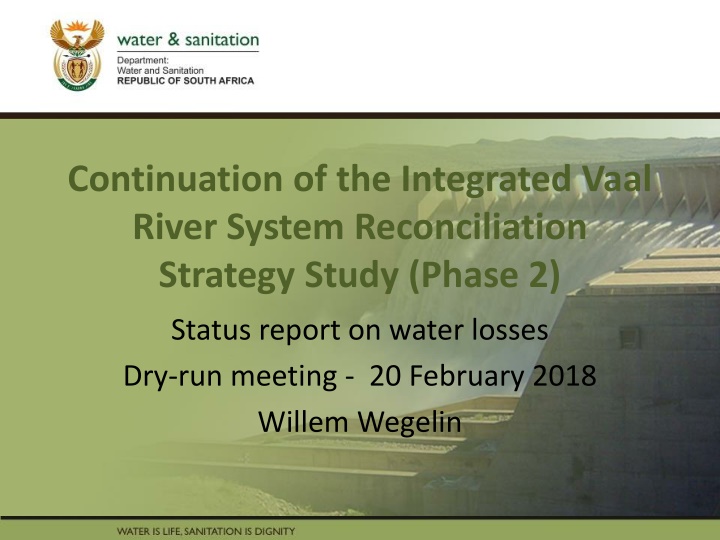
Water Loss Reduction Strategy in Vaal River System Study Update
Learn about the progress of the Water Loss Reduction Strategy in the Vaal River System, including expected savings per municipality, data submissions, and targeted vs. actual savings. This update provides insights into efforts to decrease water losses and enhance efficiency in water management.
Download Presentation

Please find below an Image/Link to download the presentation.
The content on the website is provided AS IS for your information and personal use only. It may not be sold, licensed, or shared on other websites without obtaining consent from the author. If you encounter any issues during the download, it is possible that the publisher has removed the file from their server.
You are allowed to download the files provided on this website for personal or commercial use, subject to the condition that they are used lawfully. All files are the property of their respective owners.
The content on the website is provided AS IS for your information and personal use only. It may not be sold, licensed, or shared on other websites without obtaining consent from the author.
E N D
Presentation Transcript
Continuation of the Integrated Vaal River System Reconciliation Strategy Study (Phase 2) Status report on water losses Dry-run meeting - 20 February 2018 Willem Wegelin
Background Baseline study completed in 2004/2005 An estimated 196 million m3or 15% could be saved over a period of 10 years Average consumption was expected to reduce from 330 /c/d to 290 /c/d The four biggest municipalities were expected to contribute 94.3% of the total saving The targets set in 2005 were revised in 2010 and 2012
Expected savings per municipality 2008/09 Annual Demand (million m /a) Current Non- Revenue Water (million m /a) 2005/06 Possible Savings (million m /a) % Contribution of total saving % Area Reduction City of Johannesburg 502.7 160.9 110.2 56.2% 21.9% Ekurhuleni 326.8 124.2 28.3 14.4% 8.6% City of Tshwane 214.2 62.1 20.4 10.4% 9.5% Emfuleni 77.1 31.6 26.1 13.3% 33.9% Rustenburg 27.9 9.8 3.0 1.5% 10.6% Mogale 26.4 7.1 1.7 0.9% 6.6% Govan Mbeki 20.4 5.9 1.5 0.8% 7.5% Matjhabeng 18.9 6.6 4.3 2.2% 22.9% Randfontein 8.7 2.6 0.4 0.2% 4.1% Total 1 223.0 410.8 195.9 100% 16%
Summary of data submissions Municipality Last submission City of Johannesburg November 2016 City of Tshwane April 2017 Emfuleni LM June 2017 Ekurhuleni MM November 2017 Lesedi LM April 2017 Merafong LM June 2017 Midvaal LM October 2017 Mogale City LM December 2016 Rand West City LM (Randfontein Region) June 2017 Rand West City LM (Westonaria Region) November 2017
Integrated Vaal River System 1,800,000,000 100% 15% Water restrictions 12 Aug 2016 to 13 March 2017 90% 1,600,000,000 80% 1,400,000,000 System Input Volume (m /annum) 70% 1,200,000,000 % Non-revenue Water 60% 1,000,000,000 50% 800,000,000 38.3% 36.6% 36.2% 36.1% 35.9% 35.7% 35.7% 35.5% 40% 34.9% 34.5% 34.0% 31.2% 600,000,000 30% 24.6% 400,000,000 20% Target Target 200,000,000 10% - 0% Jun-08 Jun-09 Jun-10 Jun-11 Jun-12 Jun-13 Jun-14 Jun-15 Dec-15 Jun-16 Dec-16 Jun-17 Jun-22 Billed metered Projected SIV without WDM Billed unmetered Projected SIV with WDM Non-Revenue water % Non-revenue water
Total targeted vs actual savings Projected SIV without WDM (X) kl/annum Projected SIV with WDM (Z) kl/annum Projected % savings (X Z) / X * 100 Actual demand (Y) kl/annum Actual % savings (X - Y) / X * 100 Year ending Jun-12 1 300 613 343 1 300 613 343 0.0% 1 296 073 215 0.3% Jun-13 1 325 208 539 1 273 402 875 3.9% 1 337 536 245 -0.9% Jun-14 1 350 262 570 1 268 011 188 6.1% 1 365 380 179 -1.1% Jun-15 1 375 784 167 1 262 935 804 8.2% 1 403 523 126 -2.0% Dec-15 1 388 841 060 1 261 797 859 9.1% 1 420 101 889 -2.3% Jun-16 1 401 897 953 1 260 659 914 10.1% 1 413 031 287 -0.8% Dec-16 1 414 954 845 1 259 521 968 11.0% 1 374 064 291 2.9% Jun-17 1 424 217 581 1 261 854 997 11.4% Jun-22 1 554 334 603 1 373 114 426 11.7%
Dec 2016 summary of targeted vs actual savings Projected SIV without WDM (X) kl/annum Projected SIV with WDM (Z) kl/annum Projected % savings (X Z) / X * 100 Actual demand (Y) kl/annum Actual % savings (X - Y) / X * 100 System Johannesburg 588 066 982 493 829 325 16.0% 573 852 765 2.4% Tshwane 341 884 714 327 517 148 4.2% 332 387 892 2.8% Ekurhuleni 369 315 955 346 720 055 6.1% 352 297 242 4.6% Emfuleni 93 946 677 70 942 157 24.5% 95 965 374 -2.1% Midvaal 14 756 008 13 853 121 6.1% 12 639 915 14.3% Lesedi 6 984 510 6 660 163 4.6% 6 921 103 0.9% Mogale City* 29 553 459 27 943 452 5.4% 33 408 509 -13.0% Randfontein* 9 903 720 9 589 349 3.2% 9 668 710 2.4% Westonaria* 7 192 187 6 460 157 10.2% 0 Merafong City* 13 324 128 12 056 011 9.5% 13 476 658 -1.1% Total 1 474 928 340 1 315 570 936 10.8% 1 430 618 168 3.0% *Total excl West Rand DM 1 414 954 845 1 259 521 968 11.0% 1 374 064 291 2.9%
2016 IVRS Water balance 65.0% Billed metered = 778.618 Billed authorised = 893.578 Revenue water = 893.578 Authorised consumption = 984.686 System Input Volume = 1374.064 Billed unmetered = 114.960 Unbilled authorised = 91.108Unbilled unmetered = 90.569 Apparent losses = 111.622 Apparent losses = 111.622 Non-revenue water = 480.487 Water losses = 389.378 Real Losses = 277.757 Real Losses = 277.757 28.3% 35.0%
IVRS litres/capita/day 16,000,000 330 14,000,000 320 12,000,000 310 10,000,000 300 Litres / capita / day Population 8,000,000 290 13,360,349 12,558,497 12,558,497 12,486,677 12,486,677 12,498,118 12,320,990 11,467,478 11,379,351 11,292,001 11,184,241 10,160,734 6,000,000 280 10,070,614 4,000,000 270 2,000,000 260 317 325 290 308 308 314 299 303 307 302 296 277 277 0 250 Jun-08 Jun-09 Jun-10 Jun-11 Jun-12 Jun-13 Jun-14 Jun-15 Dec-15 Jun-16 Dec-16 Jun-17 Jun-22 Population served Litres / capita / day
Conclusions Updated water balance information required to assess the status quo. It is expected that the demand returned to previous levels once the water restrictions were lifted It is unlikely that municipalities in the IVRS have been able to reduce their consumption by 112 million m3/a or 9% to achieve the 2017 target Most municipalities are tracking the High demand no WCWDM scenario

